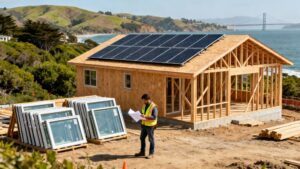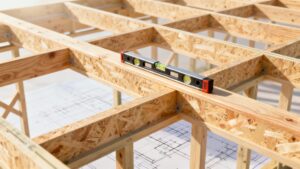In the bustling construction industry of the East Bay, San Francisco, attention to detail can significantly differentiate a good project from a great one. From efficient planning to the final execution, a streamlined construction process conserves resources and dramatically improves the finished structures’ quality and durability. Given the East Bay’s unique environmental, regulatory, and economic landscape, contractors face several challenges and enjoy numerous opportunities to excel.
This article outlines five pivotal steps that can elevate your construction processes. These steps ensure that your projects meet and exceed the high standards expected in one of the most vibrant construction markets in the United States.
1. Leverage Local Expertise and Materials
The East Bay is renowned for its rich history, diverse architecture, and strong commitment to innovative building practices. Engaging with local talent and resources is more than a logistical advantage—it is a strategic move that projects relevance and community integration.
Engage with Local Design Professionals
Partnering with local architects, engineers, and designers who are well-versed in East Bay’s zoning laws, bBay’s codes, and architectural trends can provide invaluable insights. These professionals understand the intricacies of local regulations and can help you navigate through permitting processes smoothly, avoiding common pitfalls that might delay your project.
Choose Locally-Sourced Materials
Opting for locally sourced materials is beneficial for several reasons. Not only does it support the local economy, but it also reduces the carbon footprint associated with long-distance transportation. Additionally, local materials are typically better suited to the regional climate and environmental conditions, ensuring excellent durability and performance in the final construction.
2. Implement Advanced Technology
Employing the latest construction technologies can significantly streamline your construction process in a region that thrives on technological innovation. Advanced tools foster precision and efficiency and enhance communication and project management capabilities.
Integrate Comprehensive Project Management Software
Utilize state-of-the-art project management tools such as Procore or Autodesk Construction Cloud. These platforms facilitate efficient project tracking, budget management, and seamless communication across all project stages. Real-time updates and cloud-based sharing ensure that every team member stays informed, reducing errors and enhancing collaborative decision-making.
Embrace Building Information Modeling (BIM)
Building Information Modeling (BIM) is revolutionizing the construction industry by allowing for the virtual construction of a building before its actual physical construction. This virtual model provides a three-dimensional, real-time, dynamic building modeling environment that increases building design and construction productivity. This process produces the Building Information Model, which encompasses building geometry, spatial relationships, geographic information, and quantities and properties of building components.
3. Prioritize Sustainability
Sustainability is a criterion in California, especially with the state’s stringent environmental regulations. Implementing sustainable practices meets regulatory requirements and appeals to the growing market of eco-conscious clients.
Focus on Energy Efficiency
Integrate sustainable designs that maximize natural light and use energy-efficient building materials. Consider installing solar panels, energy-efficient HVAC systems, and smart home technologies that help reduce energy consumption and appeal to environmentally conscious buyers.
Water Conservation Techniques
To effectively manage water usage, incorporate rainwater harvesting systems and drought-resistant landscaping. These systems are particularly advantageous in California’s climate. California significantly produces a build-in operation over time.
4. Enhance Communication and Documentation
Clear communication and thorough documentation are pillars of successful project management. They ensure accountability, facilitate compliance, and enhance project execution strategy.
Implement Effective Communication Channels
Establish clear, direct communication channels among all stakeholders, including clients, subcontractors, and suppliers. Use digital tools to ensure messages are delivered on time and documented appropriately.
Keep Detailed Records
Document every aspect of the construction process, from initial client meetings and contractual agreements to daily logs and final inspections. These records are essential for maintaining transparency and invaluable for legal protection and future reference.
5. Focus on Quality Assurance and Client Satisfaction
The ultimate goal of any construction project is client satisfaction through the delivery of a high-quality product. Regular quality assessments and client involvement are key to achieving this goal.
Regular Quality Inspections
Conduct frequent on-site inspections and audits to ensure every construction phase meets the set quality standards. Use checklists and quality control metrics to evaluate project components systematically.
Active Client Engagement
Involve clients at every significant milestone. This engagement makes informed decisions and agents and ensures the project meets client expectations. Follow-ups also provide critical feedback that can be used to improve future practices.
Conclusion
Elevating your construction process in the East Bay requires a meticulous approach to local integration, technological adoption, sustainable practices, communication, and quality control. By embracing these five streamlined steps, contractors can significantly enhance their operational efficiency, project output, and client satisfaction, establishing themselves as leaders in the competitive East Bay construction landscape.
Remember, continuous improvement is key in the fast-evolving world of construction. Staying updated on the latest trends, technologies, and local developments will ensure that your construction processes remain excellent and exceptional.









